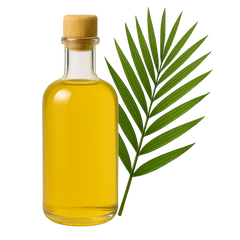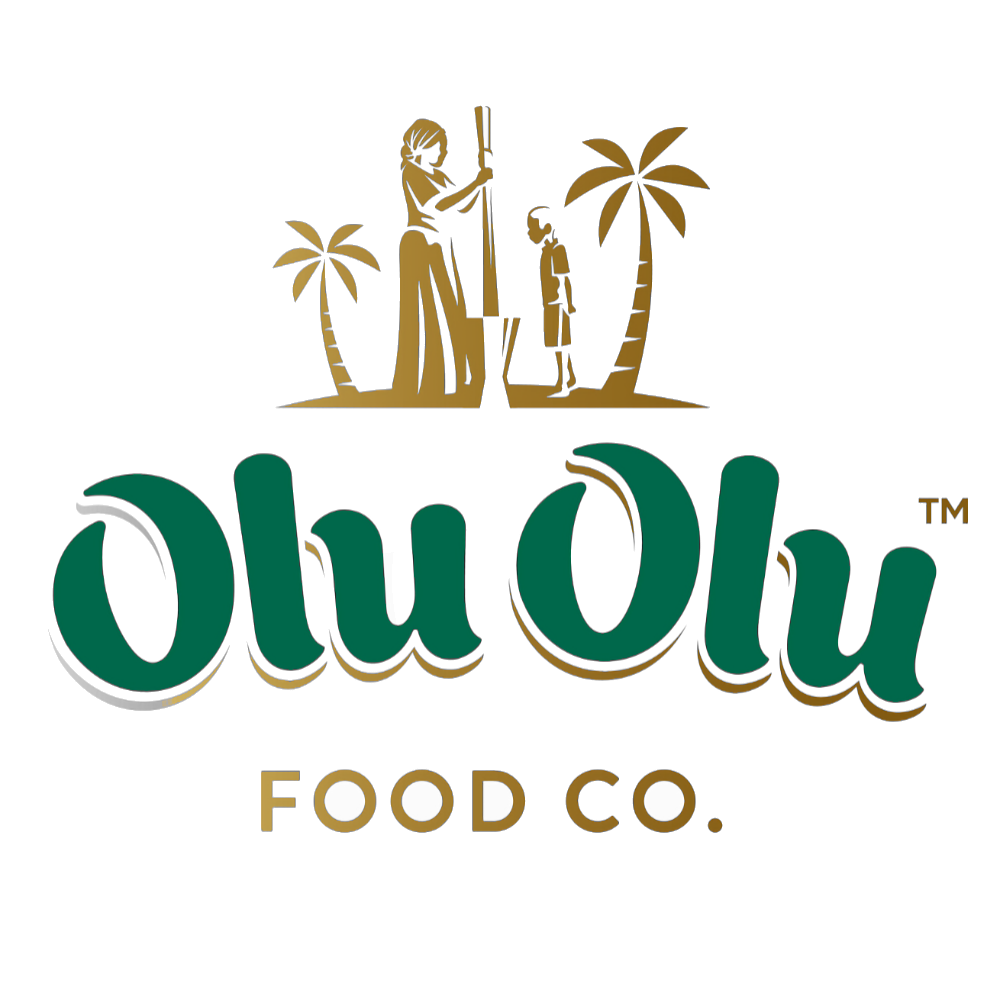about us


A letter from management
Title
We want to thank you for taking the time to find out about our story, and why we do what we do. Olu Olu® Foods began life on a kitchen table in North London over 30 years ago, where Mr Olu began experimenting with an instant flour mix, which he would later call Poundo Yam Flour.
The idea of turning a very popular but time-consuming and labour-intensive meal, into an Instant Powder, would prove to be very popular at the time and still till today, and has in turn led to the establishment of a global Poundo yam industry, with at least a hundred different producers and manufacturers.
Title
Olu Olu® are now recognised as pioneering innovators, and market leaders within the African Foods Market. We have been awarded several Gold Stars from the Great Taste Awards of the Guild of Fine Foods, for the exceptional taste and quality of some of our product offerings.
Every single product we offer, has its own story. And because of our relentless attention to detail, every step of the production process is carefully managed to ensure nothing but love and mother nature go into all our food products. We hope our story is really the story of change that can happen in the world when one follows your instincts and try to add value to your culture and heritage.

Company Directors
info@oluolufoods.com

The Origin Poundo & Palmi
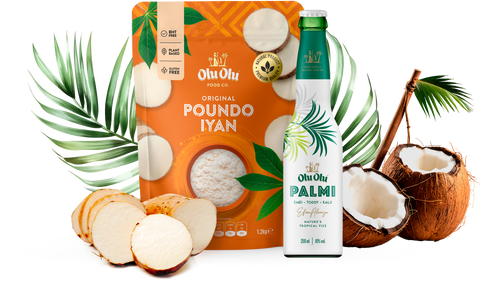
Over 30 years on and many are still unaware that Olu Olu® Foods developed the formula that positively revolutionised the way millions of Africans around the world eat ‘Pounded Yam’. As founding fathers of Instant “Poundo” flour, Olu Olu® is responsible for pioneering and popularising the concept of this flour and introducing it to the diasporan market.
Olu Olu® became one of the first companies to commercially package Palm Wine for export into the European markets in the mid 1980’s. By the late 90s Olu Olu® Foods had become the first company ever to produce African Ready Meals, through its microwavable tinned foods range. They introduced radical products such as canned Jollof Rice, tinned Yam Porridge and Egusi Stew to name a few.
Olu Olu® are recognised as pioneering pace setters, technological innovators, and market leaders within Africa and Exotic Health Foods Market. We have recently been awarded Gold Stars from the Great Taste Awards of the Guild of Fine Foods, for the exceptional taste quality of some of our product offerings.

Nourishing Lives, Giving Back
We also love to give back and be sustainable as we can. You can find out more about our charity program Olu Olu Gives Back below.
the journey so far
Since our inception, we have proudly brought the flavors and richness of African traditions to the table while embracing innovation at every stage of our process. Over the years, our brand has evolved, reflecting the changing needs and desires of our consumers, all while remaining connected to the roots that tie us to our cultural heritage.
Join us on this journey of evolution and discover how tradition and innovation intertwine in every product we offer.
1980’S
Aligning with the company’s origins, Olu Olu’s very first logo was crafted by Mr Olu himself. The Olu ‘squared’ logo represents many things. It’s mathematical symbolism stems from the founders engineering background. It’s interior colours and design represented the company’s Nigerian heritage, based on foods grown in fertile African soil. But, perhaps most importantly, the O ‘squared’ represented Mr and Mrs Olu’s joint venture.

1990’S
Keeping much of the meaning, but shedding the mathematical connotations, the updated Olu Olu logo boldly foregrounded the founders’ names—unambiguously displaying the company’s name on each and every package; and incorporated an African village illustration into the logo. This brand recognition was important throughout the 2000s, as both legal and counterfeit competition in the Poundo flour market made brand recognition even more important.
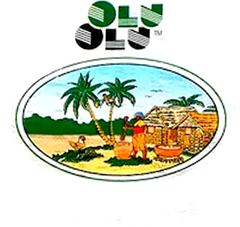
2000’S
Having received recognition at the Great Taste Awards, a premium-feeling black and gold variant of the logo was developed. Lending the brand a new air of quality and prestige and allowing the logo to really pop out of the packaging; making the brand even more recognisable on store shelves. The new design also featured an ode to the brand’s heritage, in the form of a small golden icon of the village scene, making the overall brand tone less 'playful' and colourful.
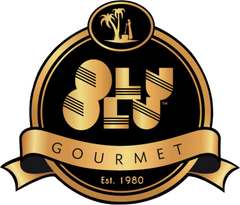
2010’S
The brand is now becoming synonymous with the stripes in the font theme. But a while had past and we felt it was time to be revised and given a slight overhaul, boldening its appearance and making it appear more refined and commercial, improving on the round edges and smooth corners of the text. The African village scene illustration was commissioned to a renowned British illustrator, who revised our original design and made it more contemporary.

2020’S
The 2020s marked a rebranding and restructuring phase for the company, shedding bold, bulky typefaces for a cleaner, more commercial look. Moving away from a dark, serious tone, the brand embraced lighter colors and softer tones. Notably, the board made a bold move by removing the stripes from the logo text—a hallmark for 30 years. The new logo condenses decades of history, combining a heritage-focused graphic with a sleek, modern typeface.
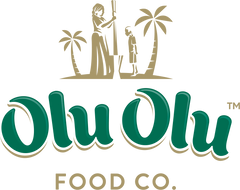
1980’S
Recognized as one of the first palm wine brands consistently exported from Africa, it debuted in 750ml glass bottles with hand-applied labels and plastic neck sleeves. Initially producing just 5,000 liters monthly, it quickly became a sought-after choice for weddings, birthdays, and social events. This success symbolized local pride, proving that a beloved delicacy could become a thriving business.
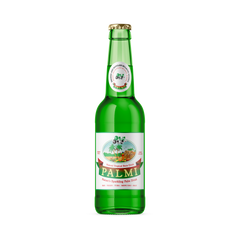
1990’S
To meet the growing demand and foreign interest, a new label design was conceived. Management were not too pleased with the new design direction, but went ahead with the new artwork. The use of green coloured bottles was retained as it protected the juice from UV spoilage whilst allowing customers to see the drink. However, the new labels were well-received by customers and the word Palmi was slowly becoming a household name synonymous with Palm Wine.
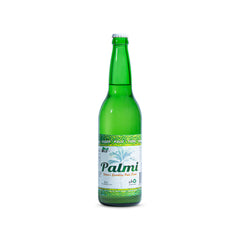
2000’S
Keeping up with the times, a new 330ml canned version of Palmi was developed, offering the same delicious palm wine in a more convenient and lightweight package. Little did we know it would be such a success—we couldn’t keep up with demand! Due to the simultaneous release of our canned meals, and only one modified canning line, it would take a few years for the facility to catch up to the demand for canned Palmi!
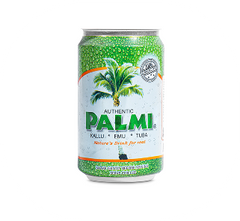
2010’S
The middle of the millennia saw the introduction of Palmi in plastic bottles. This was a strategic move by the board to appeal to the western catering, foodservices and nightlife industry, where smaller drinking portions are preferred, and glass bottles are prohibited for health and safety reasons. This proved to be a relative success, but sales of the plastic bottled version began to dwindle with feedback being that the drink had lost its natural effervescent taste and a certain “crispness” when packaged in plastic.
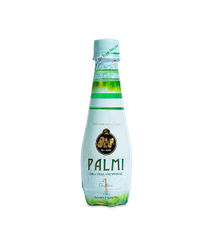
2020’S
It’s over 40 years now, and the Palmi name is still going strong! It has now literally become a generic term in reference to Palm Wine, in most West African households. Considering it was the companies first trademark, its still one of the company’s staple offerings to date. On Palmi’s 40th anniversary the company introduced a 330ml sized bottle and rebranded its bottle design, in alignment with the product’s newfound heritage status and market positioning.
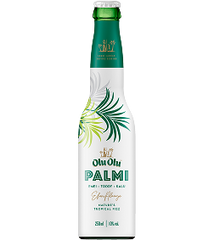
1980’S
The original Poundo Yam Flour showcases the brand’s humble beginnings. This bag was one of thousands produced, heat-sealed and signed by Mr & Mrs Olu’s very hands. Despite the non-descript packaging, poor inconsistent packaging and only 50 bags being produced each day, orders were flooding in for this new product. Seeing hand-crafted bags like these exported across the UK and North America.
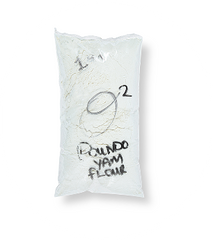
1990’S
Quickly becoming a household name for West African diaspora in the UK and North America, Poundo Flour deserved a new face. The handwritten packaging was no longer suitable, and the first set of printed bags were produced. Mr and Mrs Olu carefully designed the new printed packaging with eye-catching colours, text and logos, heavily inspired by the Nigerian flag. Transforming the Poundo Flour from a beloved product, into a recognisable brand.
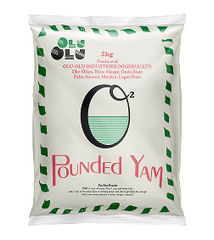
2000’S
Slowly starting to gain a good track record of consistent global demand for the product, the board now felt confident enough to invest in new packaging, showcasing the newly registered Pound’ Ol Iyan trademark, and village setting illustration emblem. The company was now able to produce up to 500 bags a day.
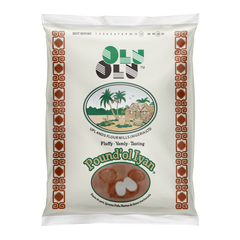
2010’S
Having firmly established itself as the go-to Poundo Flour, we were keen to deliver more value to customers. Rebranding the product under the Pound’ Ol Iyan trademark, we crafted a thicker and more durable packaging. This new packaging composition better retained the flour’s freshness, and could be produced in a semi-automated process, allowing us to produce 1,000 bags a day.
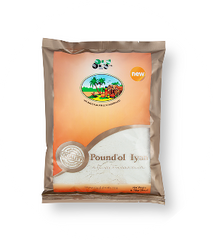
2020’S
Almost 40 years on, and Poundo is still one of the company’s most iconic products to date. Not only have we upgraded the packaging to a re-sealable ziplock bags with a thick layer / lining of foil for improved freshness and product preservation, but we also removed the transparent window synonymous with this product for over 30 year and created a fully enclosed design to further preserve the flour from UV rays on shop shelves and we changed the product name to the more reader-friendly Poundo Iyan.
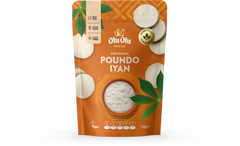
1990’S
Totally hand made from production to packing, the first edition of Plantain Chips has one major difference: the brand name. As the company’s first ever snack product, the directors were concerned a poorly received product could tarnish the business’ name. Leading the chips to be branded under Yem Yom. Yet this reticence was unfounded. The plantain chips were a hit, and to this day remain one of Olu Olu’s most beloved products!
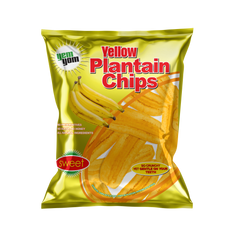
2000’S
With plantain chips fully welcomed into the Olu Olu product family, the packaging deserved an update. While the design remained to the point, Mr and Mrs Olu opted for a thicker package which kept the chips crunchier and more flavoursome. Ensuring that consumers all over the world could experience the taste of fresh plantain chips. Albeit with the slight cost that this packet was incredibly difficult to open.
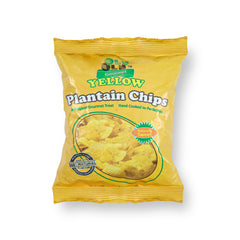
2010’S
After our Sweet and Green flavour plantain chips were awarded a Great Taste Award, the packaging needed to encompass the cultural history of this beloved snack. The packaging visuals were totally redesigned, to incorporate imagery of their West African cultural origins. Bathed in deep blacks and golds, the new package lent the award-winning plantain chips a new, premium appeal. Not only that, but the new “tear” tab made them a breeze to open, while keeping the all-important flavour locked in!
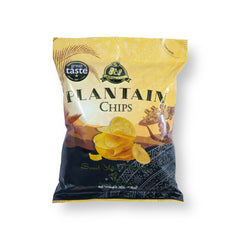
2020’S
Over two decades after their introduction, our plantain chips are still cooked with the same all-natural ingredients. So why do they taste better? Because of the packaging. Our latest packaging not only features the most eye-catching design yet, but it includes a micro-layer within the foil which locks in even more flavour and further increases the overall microns of our packaging. Preserving every bit of flavour better.
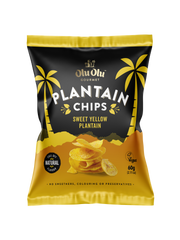
1980’S
POUND O YAM FLOUR this was the initial name used to market this unusually new product. Mr Olu instantly knew he did not want to call it Pounded Yam Flour and was keen to create his own catchy but easily identifiable name for this new product. He was initially going to call it Pounded Olu Yam Flour, but ditched the last two letters of the first words and came up with “Pound O Yam” Flour.

1990’S
POUNDED YAM FLOUR many had become accustomed to the name Pound O Yam Flour, but it was only identifiable by customers who were actively seeking the product. To further stand out on the shelves and become more easily recognisable by anyone familiar with West African culture, rather than just purists looking for the product, Mr Olu decided to change the name to Pounded Yam Flour, making the product more obvious to anyone of what it was.

2000’S
POUND’ OL IYAN owing to changes within the British legislation, and with the product containing more potato powder than yam flour, the directors decided to change the product name to avoid any dismay. The board decided this time to retain the original Pound O format but abbreviate Olu to Ol’; and discarded the use of the word Yam but replaced it with the Yoruba word associated with the cooked meal, which is Iyan; and came up with the trademark Pound’ Ol Iyan.

2020’S
After nearly 20 years of assessing consumer and market response, the board concluded that 'Iyan' was a better fit than 'Yam' for the product name. During the company’s early 2020s rebranding, the name was adjusted one last time for easier readability and pronunciation, changing from Pound’ Ol Iyan to Poundo Iyan—a choice that now seems obvious but wasn’t in earlier years.
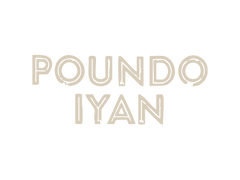

Every piece counts
Zero waste
Most of our products are made from Root Tubers, Palm Trees, Plantains and Coconuts. What’s great about these? That we can use every single part of them! We closely monitor food waste and recycle as much as possible. Items that can’t be recycled on the other hand, are sent for conversion to new energy to ensure that nothing is left to waste.

Flour
Whether used alone or in combination with other flours, tuber flours are naturally gluten-free while packing a nutritious punch filled with vitamins, minerals and carbohydrates. Unlike many other types of flour, tubers like cassava and yam can thrive in poor quality soil with limited water. Thus sidestepping the need to clear forests, use excessive fertilizer or waste water; doing their part to mitigate climate change!
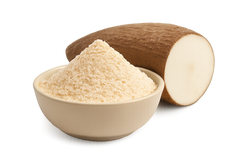

Medicine
While many across the world enjoy their flavour and sustenance, these tubers hide many medicinal benefits. Yams have been shown to help manage regulate the blood-sugar of diabetics. While both harbour abundant antioxidants and anti-inflammatory compounds, holding the potential to prevent the onset and symptoms of chronic disease. Mention about thats why you can now find yam capsules and supplements.
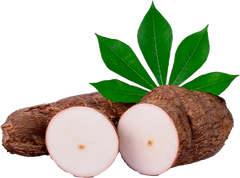

Biofuel
As they grow, these tasty tubers capture and store carbon dioxide (CO2) from the atmosphere—a process known as sequestering carbon. Once grown, cassava and yam can be fermented to produce biofuel, which can then be burned to power everything from cars to schools. This process is carbon neutral! Transforming the humble cassava and yam into a new way to power our lives.


Snacks
From fritters and fries to chips and cakes, cassava and yam are versatile culinary tubers. These snacks transform the original tuber’s rich nutrients into treats with long shelf-lives. Allowing them to be more easily and effectively stored and exported. Supporting local economies while bringing the world a variety of tasty snacks.
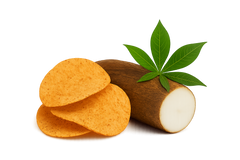

Flour
Naturally gluten-free, Plantain flour is a delicious wheat-flour alternative which also helps to curb agricultural waste! Extending the shelf-life of raw plantain by converting them into a versatile dried good. While many across much of the globe enjoy its gut-boosting benefits , plantain flour is yet to be a staple in many kitchens!
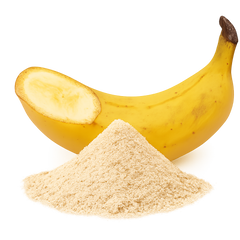

Feed
Although most of us simply toss our plantain and banana skins into the compost (or trash), that doesn’t mean they’re useless! Plantain’s natural packaging is rich in carbohydrates, vitamins, minerals and fibre, making them a superfood of their own. While we can’t digest them ourselves, Plantain skins are a super-food for livestock. Almost all of the plantain skins from our products are used for livestock feed.
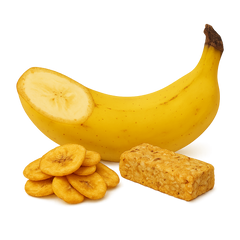

Cosmetics
While the image of Plantain may conjure up a tasty snack, this banana’s dermatological properties have been known for centuries. With age-old recipes calling for plantain to sooth dermatitis, wash the body and aid problem skin. Today, cosmetics companies are rediscovering this knowledge, incorporating plantain into topical creams, moisturisers and powders.
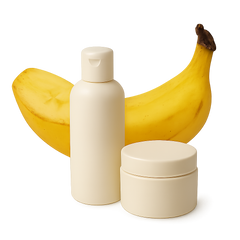

Snacks
Perhaps the most widely beloved version of plantain is the mighty plantain chip. Produced across Africa, the Americas and South Asia, these chips are enjoyed across the world. As these chips can be produced from plantain at different stages of ripeness, they help reduce agricultural waste. So you can feel extra good the next time you bite into one!


Textiles
Beyond their delicious flesh and tough shell, Coconuts grow a fibrous outer husk. While this husk isn’t useful for cooking, it’s durable, water resistant and naturally antibacterial properties can be used to create rope, brushes, filters, rugs and even comfortable clothing! As husks are a natural biproduct of cultivating coconuts, they offer a sustainable, affordable and readily available alternative material for creating textiles!
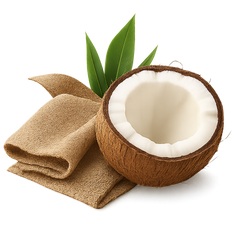

Fuel
Coconuts are already being used to fuel vehicles from cars to cargo ships, and even power hospitals! This renewable fuel is extracted from the white flesh of the coconut, and nets fewer harmful emissions than traditional fossil fuels. While coconut biofuels are extracted from the edible part of the fruit, the remaining pulp can be fermented to produce biogas—yet another renewable energy source! When we find coconut flesh that does not meet our quality standard, we offer it to research centres for biofuel research.
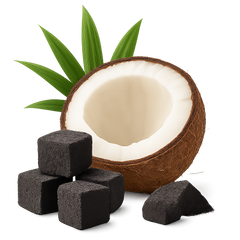

Food
From cakes to curries to fresh coconut water directly from the fruit, coconuts are most beloved for their culinary use. Offering up a variety of diverse ingredients within every humble shell. Used across the globe from sweet treats to savoury delights, coconut flesh is calorie-dense offering up high-quality fibre, healthy fats and numerous minerals.
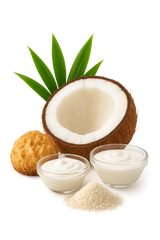

Utensils
Beyond its edible contents, coconuts come with hard shells and—of course—the very trees they grow on. These tough materials have many practical uses. Coconut shells can be crafted into kitchen utensils, from cutlery to cups and bowls. While coconut wood is a hardwood timber strong enough to build flooring, furniture and even housing.
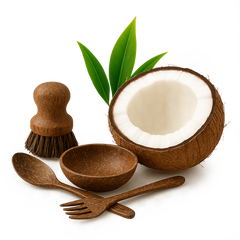

Textiles
From fibre to frond, multiple parts of palm trees which may initially seem useless can be transformed into durable textiles. Most commonly, extracted fibres can be spun into yarn or blended with other fabrics, such as cotton or linen, to create hybrid, natural fabrics imbued with unique properties which are usually only found in synthetics.


Wine
Popular across the world’s tropical belt, where palms thrive, palm wine is a family of drinks produced from various species of palm. Crafted by fermenting palm sap with natural yeasts, this nutrient-rich, low-alcohol beverage is often the life of the party. And thanks to its minimal processing and non-destructive harvesting, it can be incredibly sustainable.
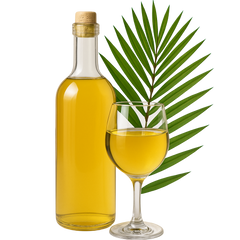

Oil
Despite its diverse uses from foods to cosmetics, this widely used oil has been the subject of controversy due to poor agricultural practice. But it’s worth separating the product itself from the unsustainable practices surrounding it. When done sustainably, palm oil can remain delicious and incredibly useful, without harming the planet.
